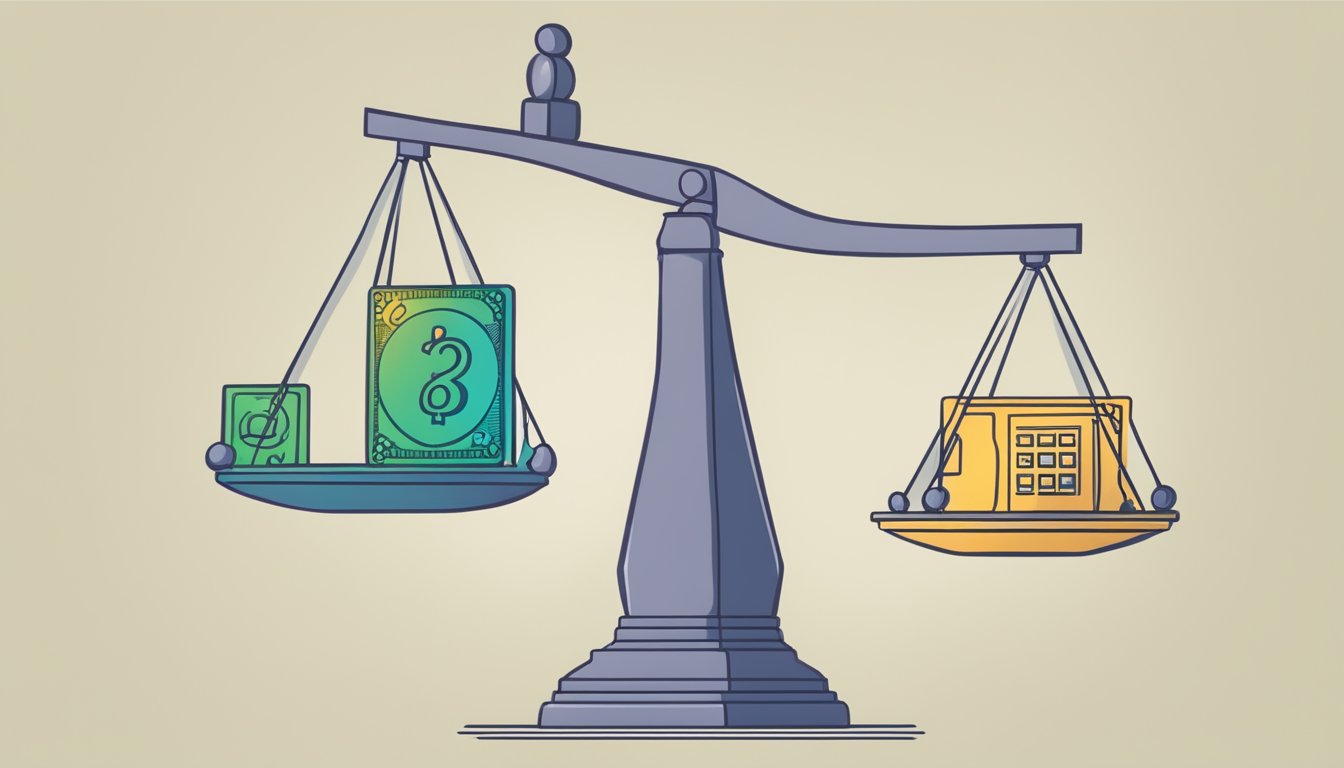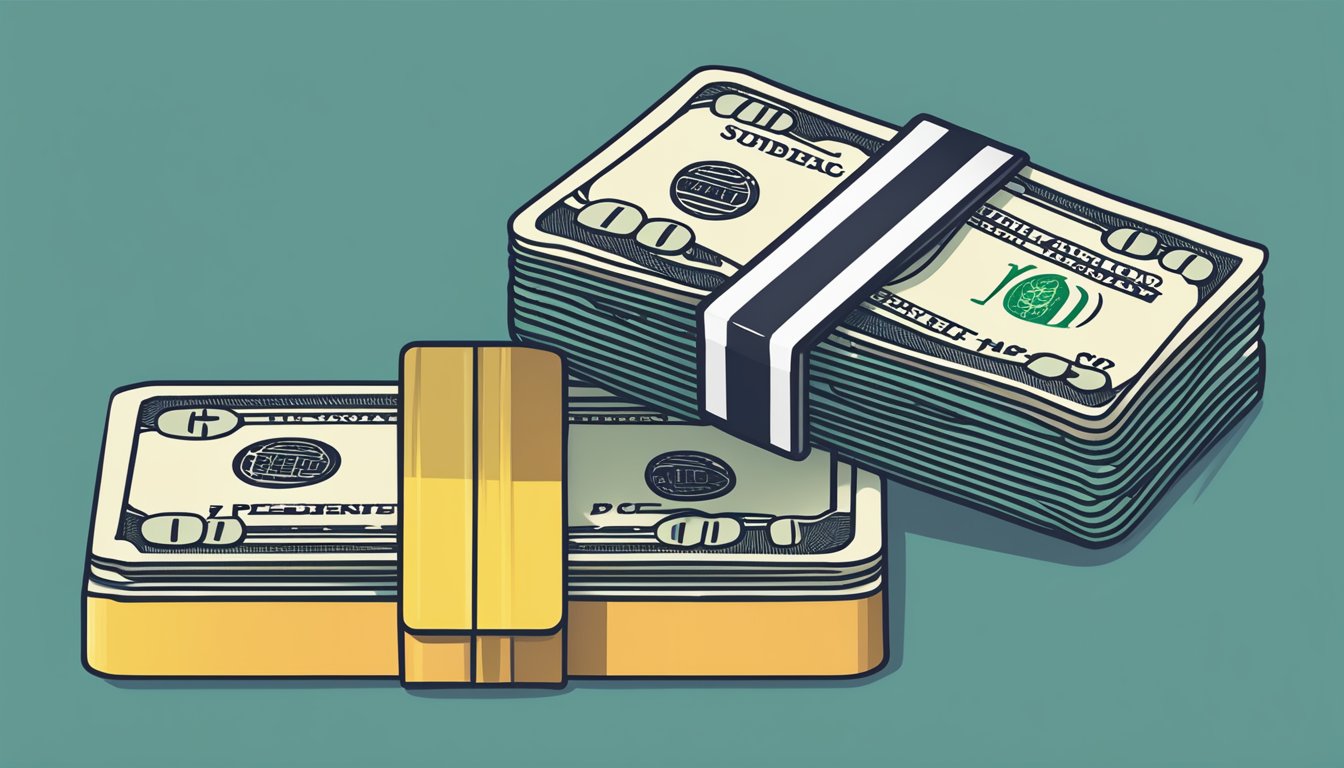If you’re in need of funds, you might be considering taking out a loan or line of credit. But what’s the difference between a personal loan and a line of credit? And which one is better for you? In this article, we’ll explore the key differences between personal loans and lines of credit, and help you decide which one might be right for you.

A personal loan is a type of credit that provides you with a lump sum of money upfront. You’ll then repay the loan over a set period of time, usually with interest. Personal loans are often used for large, one-time expenses, such as home renovations, weddings, or medical bills. They typically have fixed interest rates, so you’ll know exactly how much you’ll be paying each month.
A line of credit, on the other hand, is a type of credit that allows you to borrow money as you need it, up to a certain limit. You’ll only pay interest on the amount you borrow, and you can repay and borrow again as needed. Lines of credit are often used for ongoing expenses, such as home repairs or education costs. They typically have variable interest rates, meaning your monthly payments may fluctuate.
Key Takeaways
- Personal loans provide a lump sum of money upfront and are repaid over a set period of time with fixed interest rates.
- Lines of credit allow you to borrow money as you need it, up to a certain limit, and are often used for ongoing expenses with variable interest rates.
- Consider your financial needs and goals before deciding which option is best for you.
Understanding Personal Loans and Lines of Credit

If you’re in need of quick cash, you may be considering a personal loan or a line of credit. Both options can provide you with the funds you need, but they have different characteristics that may make one more suitable for your situation than the other.
Characteristics of Personal Loans
A personal loan is a lump sum of money that you borrow from a lender. You’ll receive the entire loan amount upfront, and you’ll typically have a fixed interest rate and a set repayment period. Personal loans can be secured or unsecured, meaning you may or may not be required to provide collateral to obtain the loan.
How Lines of Credit Work
A personal line of credit, on the other hand, is a revolving credit account that works similarly to a credit card. You’ll be approved for a certain amount of credit, and you can borrow as much or as little as you need up to that amount. You’ll only be charged interest on the amount that you borrow, and you’ll typically have a draw period during which you can borrow money, followed by a repayment period during which you’ll need to pay back the amount you borrowed.
Key Differences Between Personal Loans and Lines of Credit
Here are some of the key differences between personal loans and lines of credit:
| Characteristic | Personal Loans | Lines of Credit |
|---|---|---|
| Loan amount | Fixed amount | Credit limit |
| Repayment | Fixed payments | Minimum payments |
| Interest rates | Fixed interest rate | Variable interest rate |
| Fees | Origination fee | Annual fee |
| Credit score | Important factor | Important factor |
| Collateral | Secured or unsecured | Unsecured |
When deciding between a personal loan and a line of credit, it’s important to consider your specific needs and financial situation. If you need a specific amount of money for a one-time expense, a personal loan may be the better option. If you need ongoing access to funds or you’re not sure how much you’ll need to borrow, a personal line of credit may be more suitable.
Ultimately, both personal loans and lines of credit can be useful financial tools, and it’s up to you to determine which one is the best fit for your needs.
Practical Scenarios for Utilising Personal Loans and Lines of Credit

When it comes to borrowing money, personal loans and lines of credit are two popular options available to you. Both of these financial products have their own unique features and benefits that can be utilised to suit different financial needs. In this section, we will explore some practical scenarios where personal loans and lines of credit can be put to good use.
Consolidating Debt and Managing Cash Flow
If you are struggling with multiple debts, then a personal loan or line of credit can be used to consolidate your debts into one manageable payment. This can help you to simplify your finances and reduce the stress of managing multiple accounts. By consolidating your debts, you can also lower your overall interest rate and save money on interest payments.
A personal line of credit can also be a useful tool for managing your cash flow. With a line of credit, you have access to a set amount of credit that you can draw upon as needed. This can help you to cover unexpected bills or expenses, without having to dip into your savings or max out your credit cards.
Funding One-Time or Ongoing Expenses
If you have a one-time expense that you need to cover, such as a home improvement project or education expenses, then a personal loan can be a good option. With a personal loan, you can borrow a lump sum of money at a fixed interest rate and pay it back over a set period of time.
On the other hand, if you have ongoing expenses, such as auto repairs or medical expenses, then a personal line of credit can be a better option. With a line of credit, you have the flexibility to borrow only what you need, when you need it. This can help you to manage your expenses more effectively and avoid taking on more debt than you can afford.
Building an Emergency Fund or Financing Major Projects
If you are looking to build up your emergency fund or finance a major project, such as a home renovation or long-term project, then a personal loan or line of credit can both be good options. With a personal loan, you can borrow a lump sum of money at a fixed interest rate and pay it back over a set period of time. This can be a good option if you need a large amount of money upfront.
On the other hand, a personal line of credit can be a good option if you need to borrow money over a longer period of time. With a line of credit, you have the flexibility to borrow only what you need, when you need it. This can help you to manage your expenses more effectively and avoid taking on more debt than you can afford.
In conclusion, personal loans and lines of credit are both useful financial tools that can be utilised in different ways to suit different financial needs. Whether you are looking to consolidate debt, manage your cash flow, fund one-time or ongoing expenses, or build up your emergency fund, there is a financial product available to suit your needs.
Frequently Asked Questions

What are the distinct advantages of opting for a personal loan over a line of credit?
If you need a lump sum of money for a specific purpose, a personal loan may be the best option for you. With a personal loan, you’ll receive a fixed amount of money upfront, and you’ll know exactly how much you need to pay back each month. This can make budgeting and planning much easier.
Could you elucidate the differences in interest rates between personal loans and lines of credit?
Interest rates for personal loans are typically fixed, which means they won’t change over the life of the loan. On the other hand, interest rates for lines of credit are usually variable, which means they can go up or down over time. Personal loans may have higher interest rates than lines of credit, but they offer more predictability and stability.
In what scenarios might a line of credit prove more beneficial than a personal loan?
If you need ongoing access to funds, a line of credit may be a better option for you. With a line of credit, you’ll have a set credit limit, and you can borrow and repay money as needed. This can be useful if you have ongoing expenses or if you’re not sure exactly how much money you’ll need.
How do repayment terms typically vary between personal loans and personal lines of credit?
Personal loans typically have fixed repayment terms, which means you’ll need to make the same payment each month until the loan is paid off. With a line of credit, you’ll have more flexibility in terms of repayment. You can choose to repay the minimum amount due each month or pay more if you’re able to.
Can you highlight the key contrasts in the application process for personal loans versus lines of credit?
The application process for both personal loans and lines of credit is similar. You’ll need to provide information about your income, employment, and credit history. However, the approval process for lines of credit may be faster, and you may be able to access funds more quickly.
What factors should one consider when choosing between a personal loan and a line of credit for financial flexibility?
When choosing between a personal loan and a line of credit, consider your financial needs and goals. If you need a specific amount of money for a specific purpose, a personal loan may be the best option. If you need ongoing access to funds, a line of credit may be more suitable. Additionally, consider the interest rates, repayment terms, and fees associated with each option.




